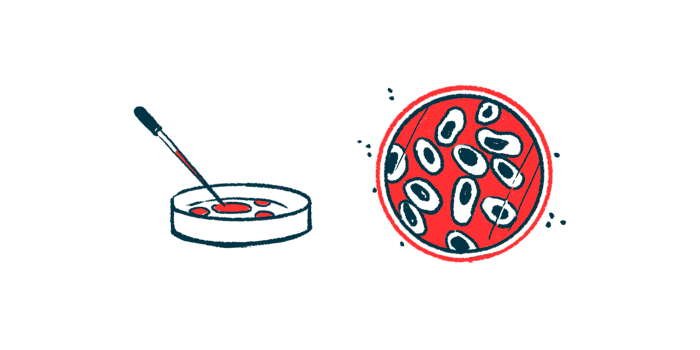New class of CFTR correctors seen to boost potency of current therapies
Compounds show high potency in airway cells derived from CF patients
Written by |

Researchers have identified a new class of CFTR correctors to treat cystic fibrosis (CF) that enhance the potency of currently available CFTR modulator therapies, a study shows.
Data reveal that these compounds demonstrated high potency in airway cells derived from CF patients.
The study, “Novel tricyclic pyrrolo-quinolines as pharmacological correctors of the mutant CFTR chloride channel,” was published in the journal Nature Scientific Reports.
CFTR modulators can correct molecular faults caused by CF mutations
CFTR is a channel protein that spans the cell membrane and is responsible for transporting chloride ions in and out of cells. It helps maintain the water balance of tissue surfaces.
In CF, inherited defects disrupt CFTR’s production or function, which alters water balance. As a result, thick mucus builds up on tissue surfaces, primarily affecting the lungs and digestive system.
The most common CF-causing mutation, called F508del, affects CFTR’s folding and stability, such that most of it is degraded before reaching the cell membrane. Even when some protein reaches the membrane, its activity is lower than normal, indicating F508del causes multiple defects to the CFTR protein.
Molecular faults caused by F508del and other CFTR mutations can be corrected by the approved class of disease-modifying therapies called CFTR modulators, which include correctors and potentiators.
Correctors target the misfolding and instability caused by F508del, allowing more CFTR protein to reach the cell membrane. Potentiators address channel defects, increasing chloride ion flow. Medicines that combine correctors and potentiators can ameliorate multiple CFTR defects at the same time.
Our study has revealed a new family of CFTR correctors, showing a marked efficacy in primary airway epithelial cells from CF patients with F508del mutation. This is an important step since the potency and efficacy of PP compounds on mutant CFTR function and trafficking needs to be improved.
Researchers tested nearly 200 compounds
To find new correctors that may enhance CFTR production and function even further, researchers in Italy generated and tested a small molecule library of nearly 200 compounds. These compounds were based on furocoumarins, a class of chemicals produced by various plants.
The researchers tested compound potency by incubating them with a cell line producing F508del-CFTR, then CFTR activity in the cell membrane was measured. As a comparison, cells were exposed separately to lumacaftor (VX-809), a CFTR corrector sold with the potentiator ivacaftor (VX-770) under the brand name Orkambi.
Screening detected one compound (PP007) that moderately increased F508del-CFTR activity by about 30% of that seen with lumacaftor. When combined with lumacaftor, PP007, part of a group of chemicals called tricyclic pyrrolo-quinolines, boosted protein activity beyond lumacaftor alone.
Several rounds of PP007 modification and screening led to PP028 as one of the most effective correctors. In F508del-CFTR cells, PP028 increased chloride transport in a dose-dependent manner, with a maximum effect equivalent to lumacaftor alone. Combined PP028-lumacaftor treatment led to a threefold increase in chloride transport than each compound alone.
Similar findings were seen in airway cells derived from CF patients, with the PP028-lumacaftor combination enhancing CFTR function eightfold compared with untreated cells. Tests also confirmed that PP028 was a corrector with no potentiator activity and improved F508del-CFTR’s production transport to the cell membrane as a mature protein.
Study also tested compounds included in triple-combination therapy Trikafta
The team also evaluated the correctors elexacaftor (VX-445) and tezacaftor (VX-661), sold alongside the potentiator ivacaftor in the triple-combination therapy Trikafta. Adding PP028 improved CFTR activity with tezacaftor but not with elexacaftor. The potentiator ivacaftor did not change the effect of the PP028/tezacaftor combination.
Experiments demonstrated that, similar to elexacaftor’s mechanism of action, PP028 bound to and stabilized a site on the CFTR protein that was different than lumacaftor.
“It will be interesting to assess if PP compounds share the same binding site of [elexacaftor],” the team noted.
Tests also showed no signs of toxicity compared with tezacaftor.
“Our study has revealed a new family of CFTR correctors, showing a marked efficacy in primary airway epithelial cells from CF patients with F508del mutation,” the researchers concluded. “This is an important step since the potency and efficacy of PP compounds on mutant CFTR function and trafficking needs to be improved.”








